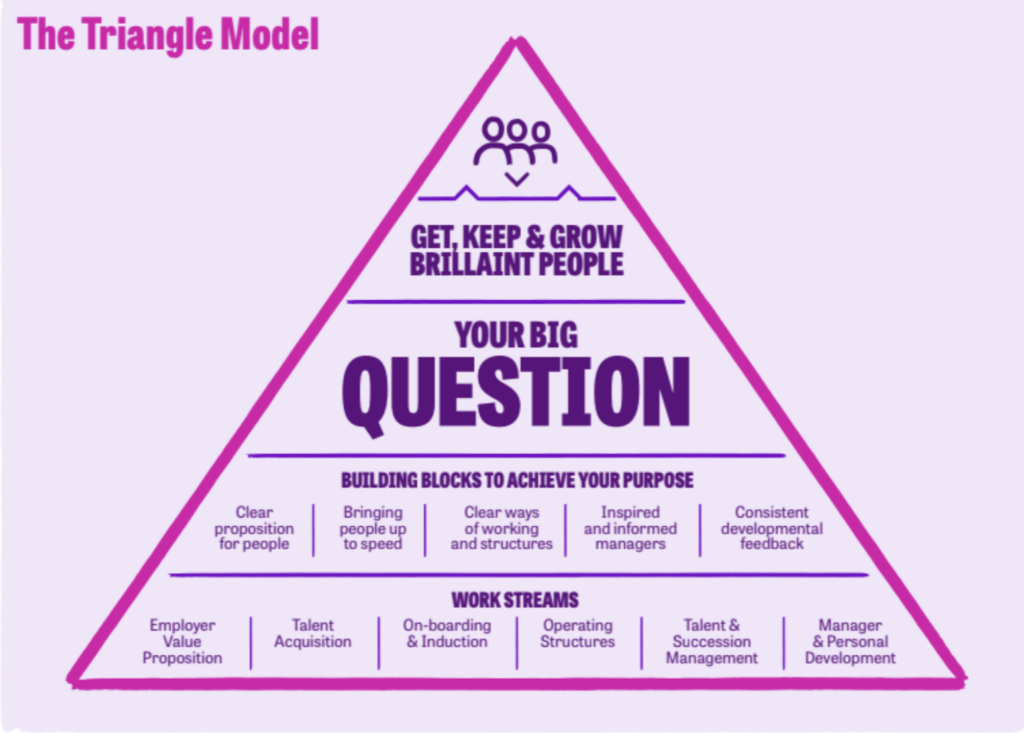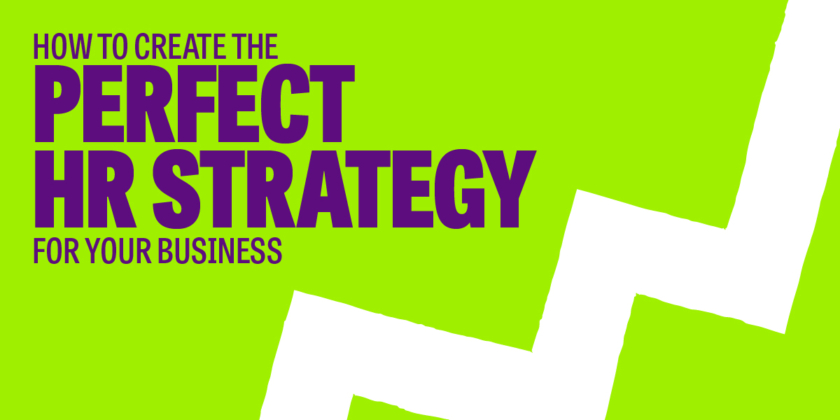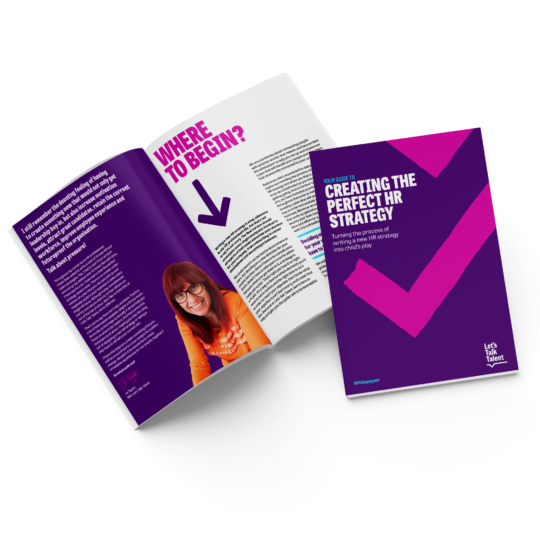Find out the stages involved in revamping your organisational HR strategy
Throughout your career as an HR professional, you will probably be asked to write a new organisational HR strategy at some point. Jo, our MD at Let’s Talk Talent, has written over ten throughout her twenty-five-year career, so we know how daunting it can be to start from scratch! But whether you are coming in to a new role or refreshing an existing plan after a recent change in leadership, there is some good news. You don’t actually have to start from scratch. Because in the end, a strategy is really just a plan that reflects the cultural needs of your organisation. So with that in mind, we have created the perfect tool to take the sting out of the process and help you get going with writing the perfect HR strategy.
Actually, that was a bit of a fib. Because honestly, there is no such thing as a perfect HR strategy. There is no one-size fits all approach that can be applied to all organisations, and certainly no magic pill that can solve all HR issues. A good plan is simply one that was developed with your specific business context in mind. It can be summed up with seven simple words: getting great people, and keeping great people. The trick is, what is needed to achieve this will vary widely from one company to the next. Your HR strategy is the join up between your business, its goals and its people and should include your culture at its very heart in order to stand a chance of generating results.
So how do you develop a framework that your leadership or board can get behind, that puts your employees and culture at its core and won’t end up in a drawer gathering dust for a couple of years? How do you create and more importantly, successfully implement, a strategy that works? That’s where our triangle model comes in.

Step 1: Review what has been done so far
We believe there is no need to start from scratch. It’s important to have a look at what has been done before, what has worked, what hasn’t, and what has been accomplished with previous projects implemented. This can be a very good indicator of the future and can save you time by revealing key learnings and maintain the momentum that was initially created.
Step 2: Determine your big question
Before starting the planning process, it’s important to identify your main issue, or as we like to call it, your exam question. Like everywhere in life, it helps not to focus on too many things at once. So ask yourself, what would have the most impact on your organisation right now? What is the core problem you are trying to solve? Are you seeing low retention rates in some departments? Is staff turnover hurting your customer experience (CX)? Whatever your big question is, it should permeate through every single area of your plan.
But how do you even start to identify what your main focus should be? Well you will need to do a little research. Identify your main stakeholders and set up conversations in order to ask key questions about short-term priorities as well as the long-term vision. This will not only give you valuable insight from all areas of the business, but also start to create buy-in for your future strategy as its whole foundation will be based on your specific organisational context.
Step 3: Identify your building blocks
Now that you know where your main goal will be, you can start to identify the strategic elements needed to deliver it effectively. How will you go about generate meaningful change? Here are a few examples of building blocks from some of our clients, but bear in mind these will vary greatly depending on your business requirements:
Examples:
- Clear proposition for people
Do you need to consider how to ensure your message is understood by everyone in the organisation? - Bringing people up to speed
How will you communicate your strategy and let everyone know what your objectives are? - Clear ways of working and structures
Do you have a structure that allows for a consistent employee experience (EX) throughout your business? Are there some murky areas where you need to clarify ways of working before trying to implement required change? - Inspired and informed managers
Your managers are on the front line and will be your biggest asset in motivating and developing their teams. Do you need to give them any additional training to ensure they are up to the task? - Consistent developmental feedback
Feedback is the key to figuring out if you are on track or if you need to course-correct throughout the roll out phase. Have you considered how to install monitoring and reporting systems you can rely on to find out if your efforts are being as effective as they could be?
Step 4: Set a timeframe and plan your workstreams accordingly
Now that you’ve identified your objective and the strategic components to get there, you’re ready to get into the nitty-gritty of the tactics. This is about setting up how you will deliver your plan and roll it out to the company, and over what period of time. For example, if setting up a two year strategy, including working on your building blocks, you may want to plan an initial wave of projects and tactical initiatives to cover the first year of activity, and then review and modify based on progress and feedback.
It’s also important to mention that your HR strategy should cover the entire employee lifecycle and the many touchpoints your people will have with your business. Whilst this may seem a bit daunting to consider in one single piece of work, we have devised a few bite-size chunks as examples of categories that could warrant some of your team’s efforts:
- Employer value proposition
This means summing up and clearly articulating who you are as a business and what you offer to anyone willing to come work for you. It’s about giving a true vision into your values, community and career opportunities. - Talent acquisition
Your recruitment efforts are the first window into what it would be like to work for you. Is the recruitment experience you offer up to scratch? - Onboarding and induction
The first one hundred days of an employee should be focused on giving them the tools they need to do the job they were hired to do, and do it well. Their joining experience will warrant careful planning. - Operating structures
Operating structures are about the way your organisation is set up and how people get things done. It touches everything from systems and platforms used to processes and teams. This category can have a huge impact on employee experience as, unlike previous workstreams, this one will affect staff every single day of their working life. It’s worth getting it right. - Talent succession and management
Ensuring the future of your business starts with making sure you have the right team in place. Are you able to identify the future leaders of your company and if so, do you have development opportunities lined up to help them step up to the next level? - Manager and personal development
Over 90% of the questions we receive during our virtual coaching sessions are centered around career development. Employees clearly want support mapping out the opportunities available within their business and the development tools that will help them get there.
Conclusion
Whilst we’ve established there is no perfect HR strategy, there are definitely ways to ensure the initiatives you implement will get traction and generate meaningful change. Developing a whole new plan of action in isolation isn’t one of them. The key to a successful roll-out is to create conversations. This will provide valuable input and generate buy-in amongst your management team, your HR colleagues and the executive board, as well as ensuring you remain aligned with the overall business strategy and vision. So go out, ask important question, listen to feedback from your stakeholders and incorporate ways to benchmark yourself into your master plan so that you can report back on your success.
But if the idea of revamping and implementing a whole new HR strategy for your organisation seems a bit daunting or if you don’t know where to start, we have a few resources to help.

